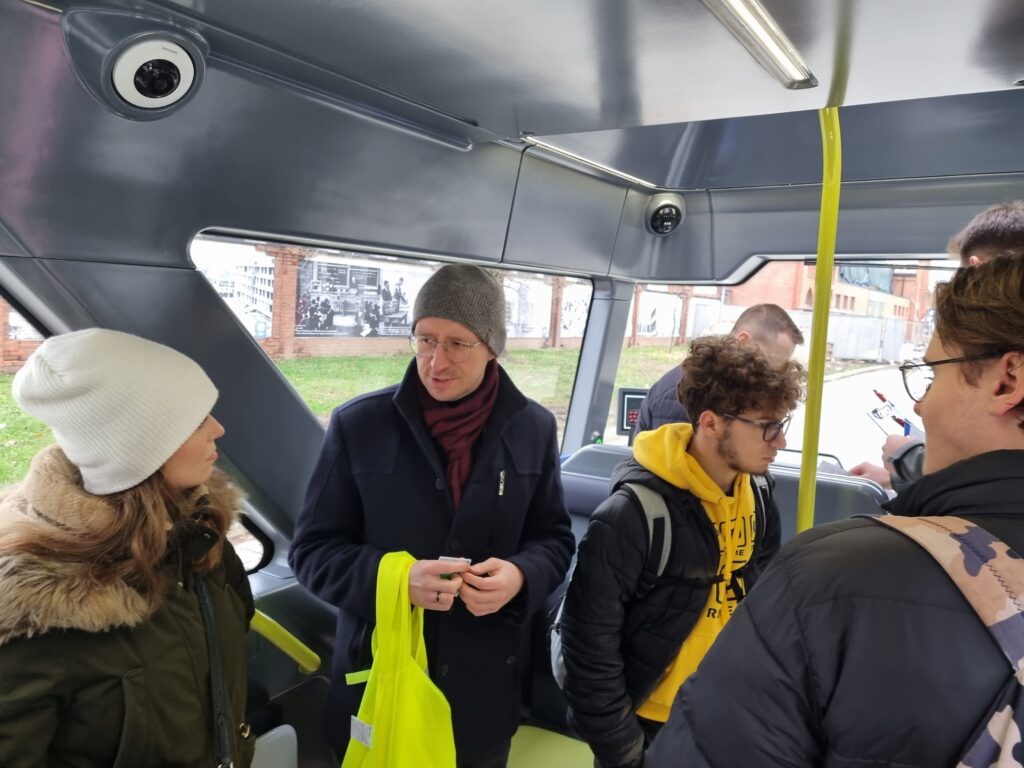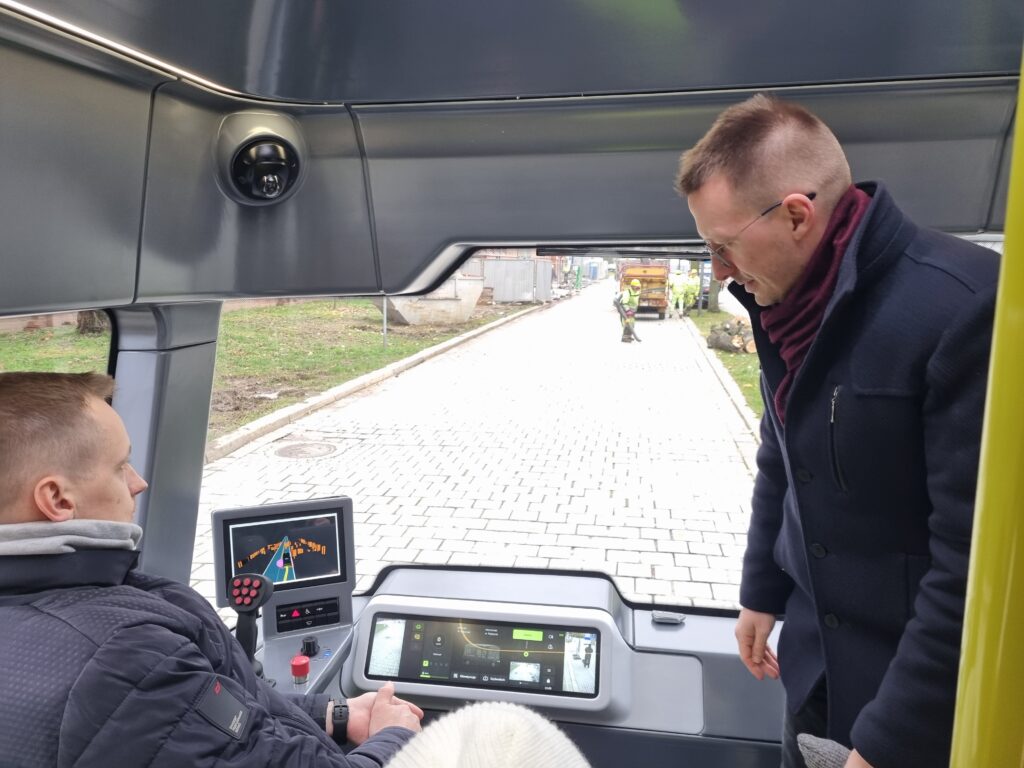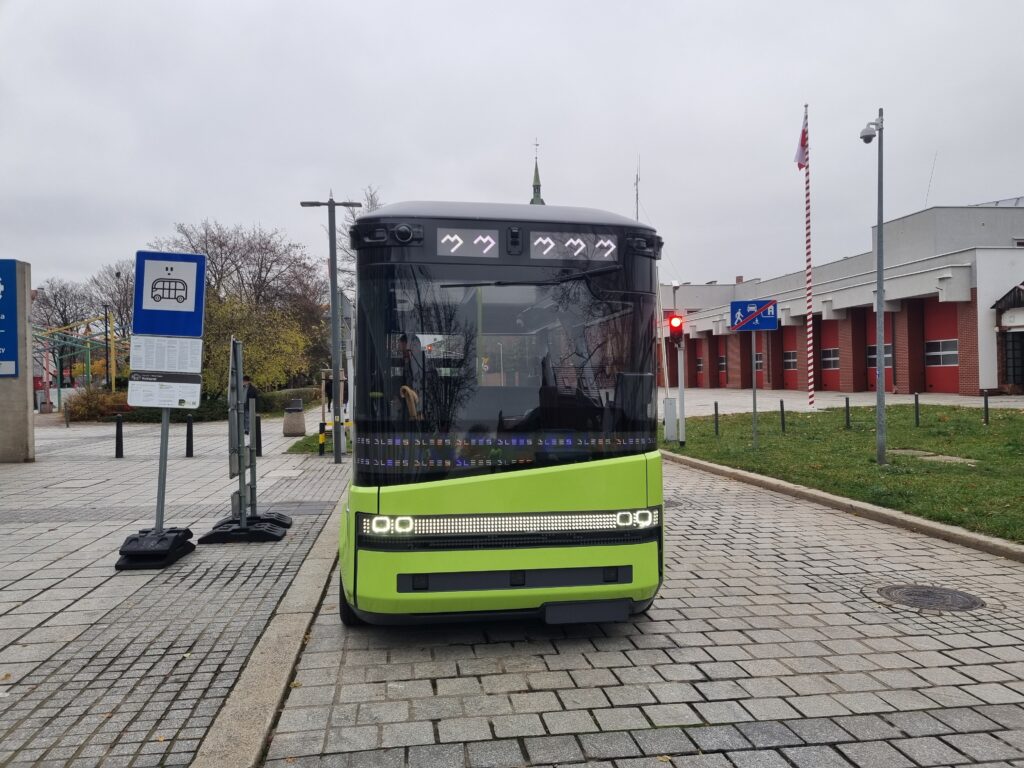Blog
Autonomous driving demonstration of the Polish Blees BB-1 minibus
Reaching new milestones in the development of autonomous driving systems brings joy to the scientific and technical community around the world, regardless of location. Poland has a great reason to be proud in this respect – on November 20, 2023, the Blees company from Gliwice began testing its autonomous BB-1 minibus, thus constituting a bright spot on the European innovation map.
On November 22, 2023, CK:PAP experts participated in the demonstration of the Blees BB-1 vehicle, transporting test participants along a programmed route, located on the campus of the Silesian University of Technology in Gliwice. The length of the route is approximately 450 m and includes 3 stops along Akademicka Street: Rector’s Office, Crossroads of a Thousand Possibilities and Wizards’ Tower. The original names of the stops were selected in a competition organized by the Silesian University of Technology.
Blees BB-1 is an autonomous, electric minibus classified at SAE level 4, i.e. with a place for an operator who, if ODD (Operational Design Domain) is exceeded, takes control of the vehicle. BB-1 can accommodate 15 people and has a range of approximately 200 km. An active video monitoring system detects internal events, and the passenger information system communicates with them. For safety reasons, the vehicle’s speed is limited to 25 km/h, although the design allows for much better performance. Despite this, on the test route, BB-1 drives at a speed of approximately 15 km/h.
The vehicle is equipped with 7 lidars, 11 cameras, 4 radars, 3 GNSS receivers and an IMU. The selection and arrangement of sensors ensure full coverage of the area around the vehicle, even in changing lighting and weather conditions. The average reaction time of the Blees BB-1 vehicle, from detecting an obstacle to initiating a braking manoeuvre, is 0.3-0.5 s. This is a much better result than in the case of a standard driver. A standard human driver is said to detect an obstacle in approximately 0.8 s, while 0.2 s is needed to start the manoeuvre. Therefore, if the vehicle is fully operational, the driver’s reaction time and braking take approximately 1 second.
Autonomous vehicles have great potential to increase road safety. In the future, they will complement public transport, having a real impact on eliminating the so-called white spots, i.e. areas where transport is currently impossible or ineffective.
During vehicle testing, scientists from the Silesian University of Technology, collect research material to determine the level of trust and acceptance for solutions of this type. According to Blees representatives, autonomous rides are very popular in various age groups – from pupils of nearby kindergartens and schools, to the elderly. As it can be seen, Silesian passengers are open to new technological solutions. We are even more pleased that the company plans to further develop its vehicles. According to the conversation with Mikołaj Kwiatkowski, Business Development Manager at Blees, the company will soon complete a new minibus.
The Blees BB-1 vehicle runs regularly every 15 minutes on weekdays, from 9:00 a.m. to 2:45 p.m., with a one-hour technical break at 12:00 p.m. Until mid-December, every person can experience autonomy completely free of charge.
The tests are supervised by the police and their organization is based on the principle of special road use: “Sports competitions, rallies, races, transport of people by tourist train and other events that cause traffic disruptions or require special use of the road, may take place provided that safety and order are ensured during the event and that a permit to conduct it is obtained. (Journal of Laws 2023.0.1047, i.e. – Act of June 20, 1997 – Road Traffic Law).
Source: blees.co







